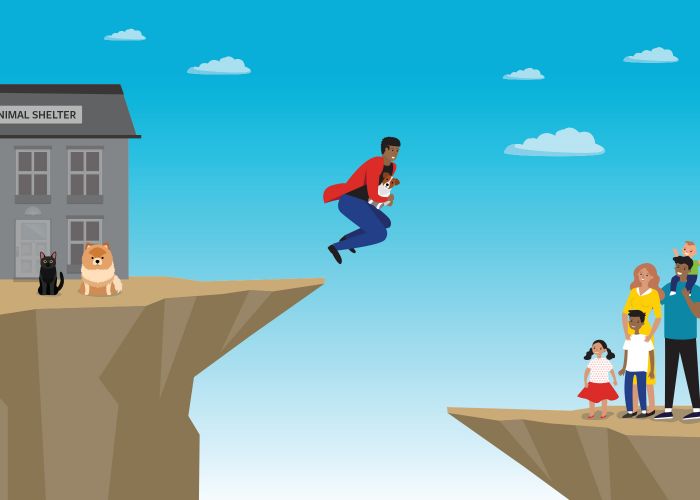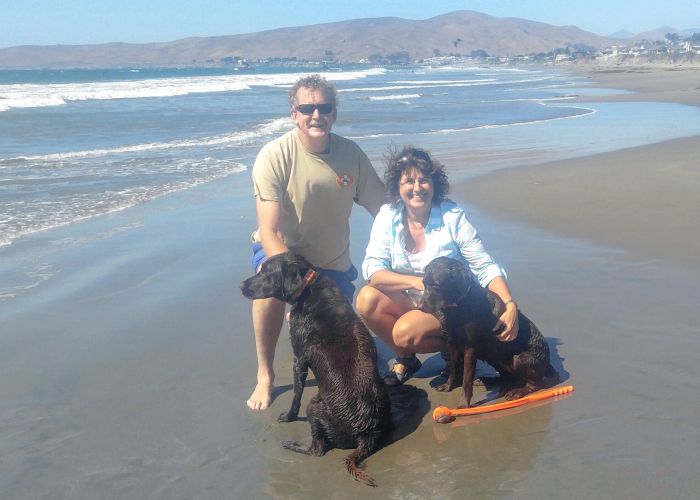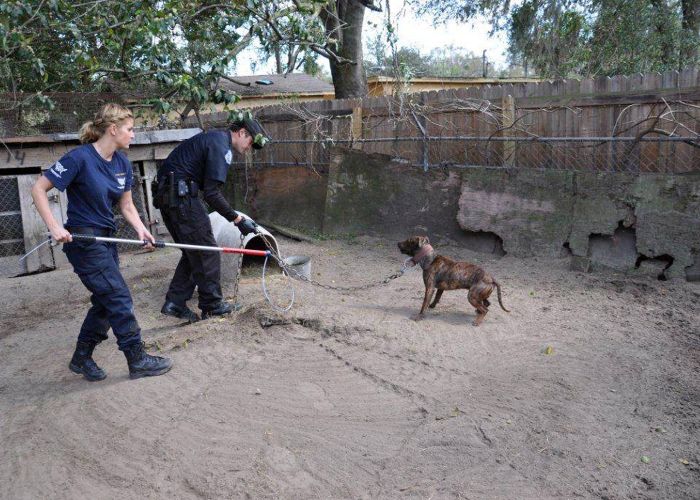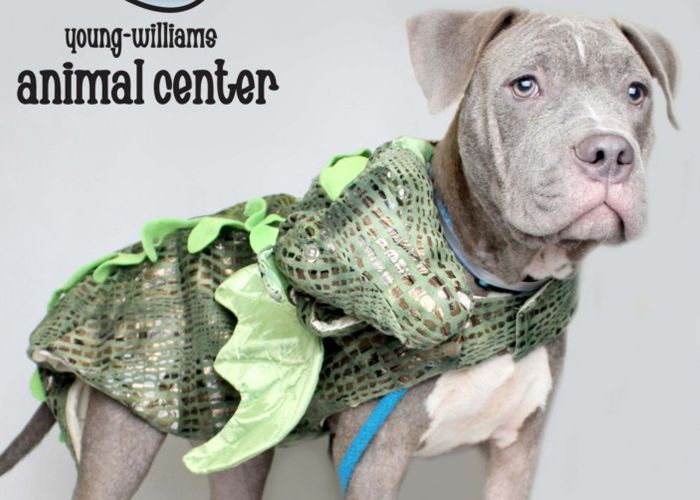Soup for skittish souls
Canine rehab research results in permanent facility and mentorship program
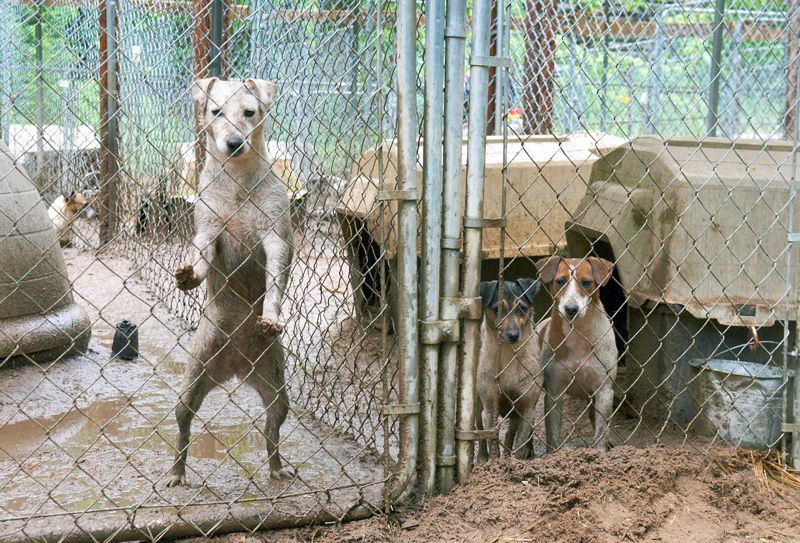
In June 2010, the ASPCA assisted local authorities in Tennessee with a hoarding case, racing in the blistering heat to catch, assess and transport 100 dogs to partner shelters.
But four dogs were so emotionally damaged they couldn’t walk on a leash or even recognize a toy, says media and communications director Emily Schneider. Although they and other special-needs dogs from the case were transported to the ASPCA’s adoption center in New York City and eventually placed into homes, adoption initially seemed unlikely, if not impossible.
Pups rescued from hoarding and puppy mill situations are sometimes “behaviorally crippled,” explains Kristen Collins, senior director of anti-cruelty behavior rehabilitation.
“They become fear ful of a lot of things that are seemingly innocuous, things that would be normal for an interaction with a pet dog,” like people approaching or even looking at them, she says. “They have very extreme, sometimes fearful responses, and that can range from total immobility and catatonia to panic.”
After meeting the dogs at the adoption center in New York, president and CEO Matt Bershadker was inspired to launch a study of rehabilitation protocols for puppy mill and hoarding victims.
“That night, we imagined a facility where abused animals like these dogs could recover and learn how to be pets, which increases their chances of adoptability and gives them the second chance they deserve. From then on, we were determined to build it,” he says.
In March 2013, the ASPCA officially launched a pilot study at St. Hubert’s Animal Welfare Center in New Jersey. Collins, who led the study, expected to succeed with around half of participants.
Instead, over the next three years, nearly 300 dogs—almost 90 percent of study participants—graduated to adoption floors at partner shelters, and their stories birthed a Netf lix documentary, Second Chance Dogs.
One of those graduates was Coconut, a Jack Russell terrier mix and puppy mill survivor. At first, dogs as emotionally damaged as Coconut seem more like wild animals than pets, says Collins. The striking, bright white pup thrashed when touched and curled her body into the air like a pill bug when leashed. “She was terrified of pretty much everything.”
Yet within six weeks, Coconut was leaping with joy to see familiar humans, playing with toys and rolling onto her back for petting, which revealed little brown spots on her tummy that staffers had never noticed before.
“I remember seeing her for the first time enjoy petting, and her whole demeanor was different. Her eyes were different; her whole body was different. Before, she was just stiff and terrified. It looked like petting almost hurt her,” says Collins. Adopted by a retired police officer and his wife in New Jersey, Coconut now happily wears Christmas sweaters.
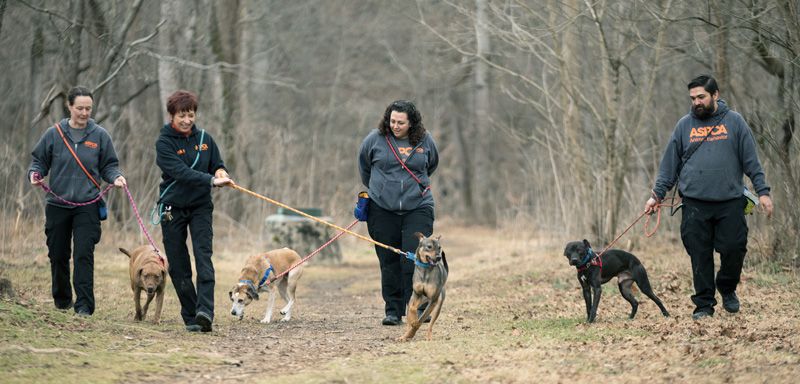
Passing it on
Encouraged by the pilot study’s success, earlier this year the ASPCA opened a permanent Behavioral Rehabilitation Center in Weaverville, North Carolina. Staffed by a 30-person team, the center is believed to be the first of its kind solely dedicated to rehabilitating victims of animal cruelty, says Schneider. What’s especially exciting, adds Collins, is that the center includes space for not only 65 dogs, but dormitory-style rooms and teaching spaces for a fledgling learning lab program.
Socializing, handling and leashing protocols incorporate tried-and-true techniques any experienced dog trainer would recognize, “broken down into teeny, teeny tiny steps,” says Collins. But learning lab protocols also incorporate insights gleaned over the course of the pilot study, when the behavioral team learned sometimes surprising best practices specific to formerly isolated dogs.
Oftentimes the sight of other dogs can act as a stressor for shelter dogs, but for hoarding and puppy mill victims, many of whom have spent their lives in cramped spaces with other animals, seeing others can be soothing.
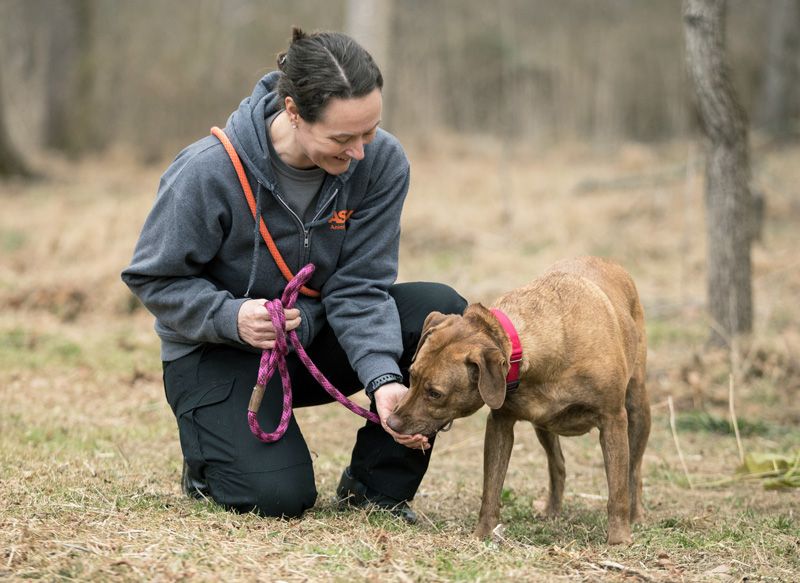
“Most of the time, other dogs are the only beings they’ve learned to socialize with well,” says Collins, adding that pairing “helper dogs” with new experiences is a key component of reducing the dogs’ anxiety. A training technique called “body targeting” also allows especially fearful dogs to choose when they want petting by touching their nose or the side of their body to a trainer’s hand.
Like many dogs , hoarding and puppy mill victims find hiding spots comforting, and the rehab center adds crates to its kennels and “real-life rooms” that mimic the rooms dogs might find in their adoptive homes. Rolling crates are a unique training tool at the center, says Collins, and allow dogs to experience new environments without the terror of walking on a leash.
Through the learning lab program, which will incorporate two learning pathways and offer classroom and hands-on learning at the center, the team will teach program structure, behavior modification techniques and dog graduation criteria to professionals from six shelters this year. After training, the team will spend five days at each participating shelter to help troubleshoot program implementation.
Between the on-site program and free online learning modules, the ASPCA hopes to form a network of “rehabilitation hubs” across the country, equipped with the knowledge and resources to handle hoarding, dogfighting and puppy mill survivors.
The ASPCA plans to publish the results of the initial pilot study later this year, and the rehab center team also plans to establish ongoing relationships with participating shelters, collecting and adding to its wealth of behavioral data.
“They’re helping us just as much as we’re helping them,” says Schneider, adding that over time, the ASPCA hopes to formalize the mentorship program with an application process.
“The landscape of animal sheltering is changing,” says Collins. “As we get a handle in some areas of the country on spay and neuter, we’re seeing more and more animals show up in shelters who have either veterinary needs or behavioral needs before they can get placed. There are different needs now, and I think that in order to make sure that as a country we’re responding to those needs, we need to unite as a field.”


